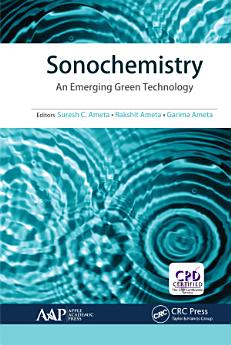Sonochemistry: An Emerging Green Technology
About this ebook
Sonochemistry deals with the effect of ultrasonic waves on chemical systems. It has green value because of non-hazardous acoustic radiation and is therefore duly recognized as a green chemistry by synthetic chemists as well as environmentalists. There is no direct interaction of ultrasound with molecular species, but the observed chemical and physical effects of ultrasound are due to the cavitational collapse, which produces drastic conditions of temperature and pressure locally. It induces the formation of various chemical species, which cannot be easily attained under conventional conditions. Sometimes, these species are responsible for driving towards an unusual reactivity in molecular entities.
This book, Sonochemistry: An Emerging Green Technology, provides the complete development of sonochemistry, starting with an introduction and basic concepts of sonochemistry and proceeding on to different types of sonochemical reactions, instrumentation, use of ultrasound in driving particular chemical reactions, and its applications in various fields, such as polymer synthesis, decontamination of water and wastewater, preparation of nanomaterials, food technology, pharmaceutical sciences, etc.
The book also briefly discusses some areas that utilize ultrasounds of different frequencies. These include food products and their processing; anaerobic digestion of waste; and medical applications such as ultrasonography, sonodynamic therapy, drug delivery, etc. Sonochemistry will be successfully used on an industrial scale in pharmaceutical drugs, polymers, nanomaterials, food technology, material science, biogas production, etc. in years to come and will be an established green chemical technology of the future.






